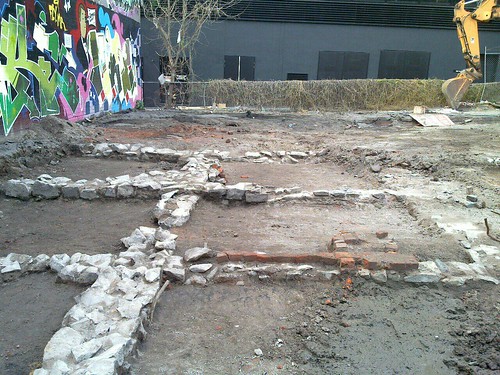From 1992 through to 1994 I was working at the Computer Unit at the University of Wales (well, wrangled an “Employment Training” position there on my own initiative) as a sysadmin and was running Linux on an IBM XT (from very dodgy memory). A friend of mine, Piercarlo Grandi, suggested to me (semi-seriously I suspect) that you could now build a large enough PC to support quite a number of users, and that the Computer Unit could use it as a central server (they were running DEC 5830s with Utrix), so I knocked up a text file and discussed it with my colleagues. They didn’t take it very seriously – little did any of suspect how much that would change.
Well tonight I indulged in a bit of computer archaeology and managed to get the data off my Amiga hard disk (from a GVP A530 expansion unit) and browsing around happpened to stumbleover that text file, dated 8:20pm on the 8th August 1993. It’s quite touchingly naive in places, and my numbers are pretty ropey.. 🙂
Preliminary Hardware Configuration for a Main Service Linux Machine
Item Each Number Total
Case 100 1 100
Keyboard + Mouse 100 1 100
Floppies 100 1 100
DAT Drives 750 4 3000
EISA SCSI Controllers 300 2 600
Memory (Mb) 25 256 6400
Pentium EISA Motherboard 1000 1 1000
3.5Gb SCSI-II Disks 1800 5 7000
Screen+SVGA Card 1000 1 1000
EISA Ethernet Card 200 2 400
CD-ROM Drive 300 1 300
20000
Projected to be able to support between 200-400 users running Linux 0.99.p12
(Alpha release kernel with patched IP - appears stable)
Notes:
(1) I've seen reports that the ethernet driver code may suffer from a
memory leak, but I've not seen any evidence for this yet as my
machine hasn't been turned on for a long enough period for it to
cause any problems.
(2) As it is so new there is very little commercial software available
for it, but there is a quite sizeable free software base with many
of the GNU packages already ported for it, and this is generally of
high quality.
(3) The Linux kernel is well thought out, and includes support for shared
libraries (which Ultrix sadly never picked up) which significantly
reduces the amount of memory applications need.
(4) A Linux box of the size proposed for the service machine has not
been attempted yet (as far as I know), but ones of the size of the
proposed testbed machine are already in usage on the Internet. I
believe that Linux can handle this scaling up with no problem.
(5) There are apparently companies within the UK who sell support services
for Linux, I will investigate further.
(6) There is already a large amount of Linux expertise on the Internet,
including the comp.os.linux newsgroup, the linux-activists mailing
list and even an IRC channel dedicated to Linux users.
This post is dedicated to Rob Ash, my then boss, who took a chance taking me on after my time as a student mucking around on computers when I was meant to be doing my Physics degree, and who was a great mentor for me.



